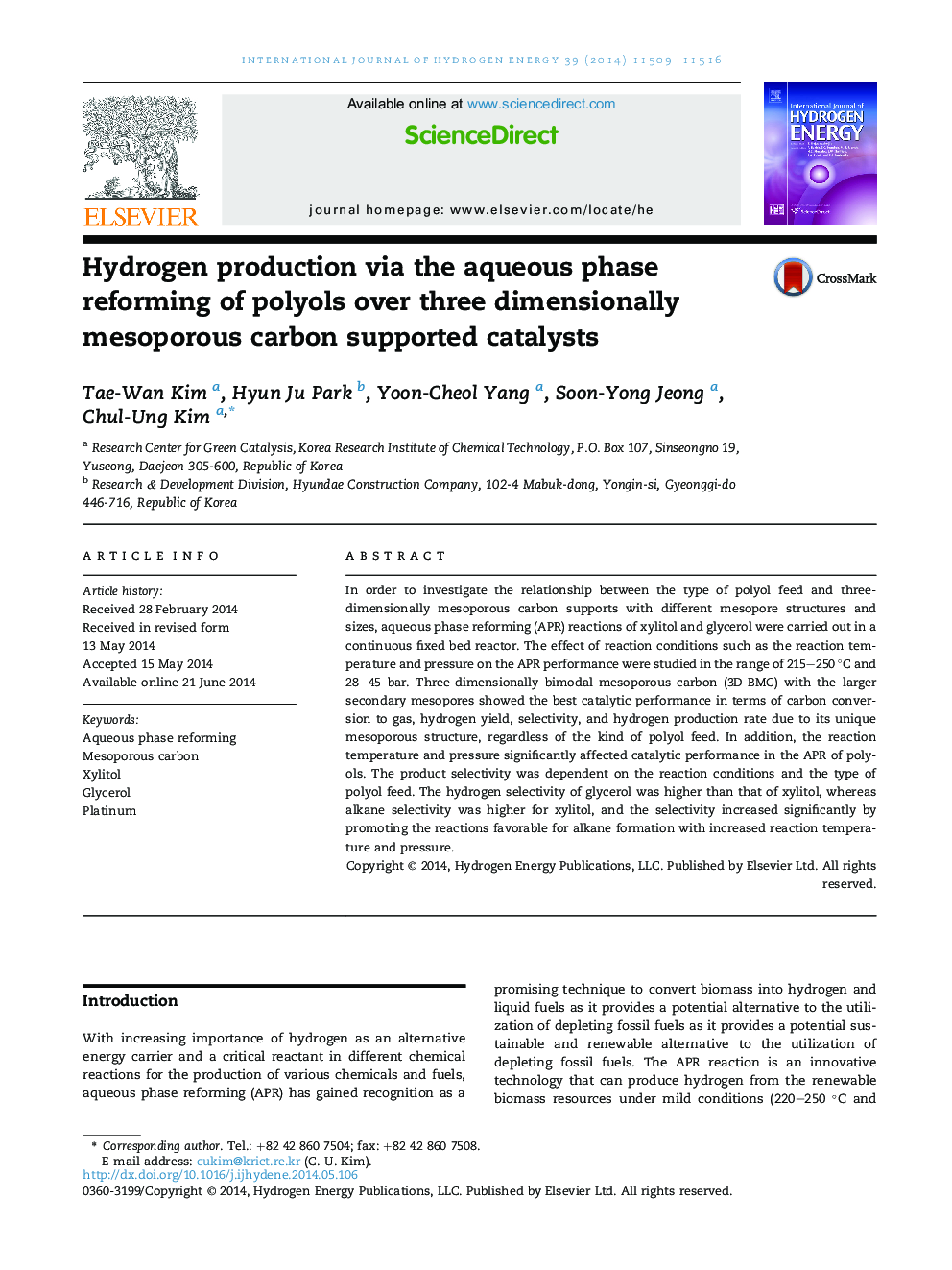| Article ID | Journal | Published Year | Pages | File Type |
|---|---|---|---|---|
| 1273169 | International Journal of Hydrogen Energy | 2014 | 8 Pages |
•Aqueous phase reforming (APR) reactions of xylitol and glycerol were carried out.•The type of polyol feed and three-dimensionally mesoporous carbon supports were studied.•The hydrogen selectivity of glycerol was higher than that of xylitol.•Three-dimensionally bimodal mesoporous carbon showed the best catalytic performance.
In order to investigate the relationship between the type of polyol feed and three-dimensionally mesoporous carbon supports with different mesopore structures and sizes, aqueous phase reforming (APR) reactions of xylitol and glycerol were carried out in a continuous fixed bed reactor. The effect of reaction conditions such as the reaction temperature and pressure on the APR performance were studied in the range of 215–250 °C and 28–45 bar. Three-dimensionally bimodal mesoporous carbon (3D-BMC) with the larger secondary mesopores showed the best catalytic performance in terms of carbon conversion to gas, hydrogen yield, selectivity, and hydrogen production rate due to its unique mesoporous structure, regardless of the kind of polyol feed. In addition, the reaction temperature and pressure significantly affected catalytic performance in the APR of polyols. The product selectivity was dependent on the reaction conditions and the type of polyol feed. The hydrogen selectivity of glycerol was higher than that of xylitol, whereas alkane selectivity was higher for xylitol, and the selectivity increased significantly by promoting the reactions favorable for alkane formation with increased reaction temperature and pressure.
Graphical abstractFigure optionsDownload full-size imageDownload as PowerPoint slide
